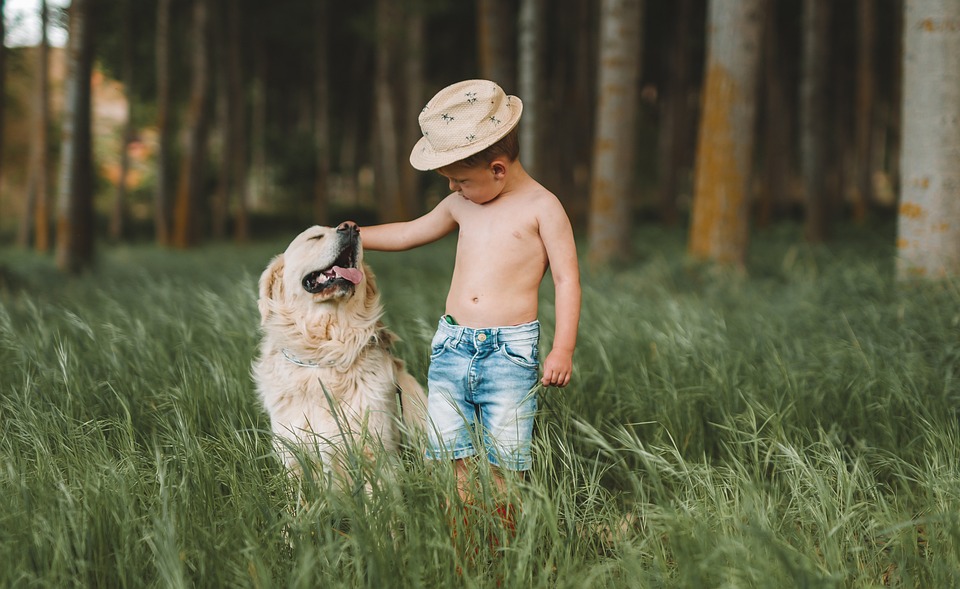Title: Training for Polite Behavior During Family Meals or Gatherings: Creating a Calm and Enjoyable Dining Experience with Your Dog
Introduction:
Family meals and gatherings are meant to be special moments where loved ones come together to enjoy each other’s company. However, when our furry friends become overexcited or exhibit rude behavior, these occasions can quickly turn chaotic and stressful. Training your dog to be polite during mealtime not only ensures a peaceful atmosphere, but also enhances the bond between your four-legged companion and the rest of the family. In this article, we will explore effective strategies and techniques to teach your dog good manners during family meals or gatherings.
Why is Training for Polite Behavior Important?
Before delving into the training methods, it’s essential to understand why teaching your dog polite behavior during meals or gatherings is crucial. Here are a few reasons:
1. Safety: Dogs that beg for food or snatch items from the table can put themselves at risk of consuming harmful substances or choking on bones or foreign objects.
2. Hygiene: Preventing your dog from begging at the table or stealing food helps maintain cleanliness and prevents the spread of bacteria or potential food poisoning.
3. Social Enjoyment: Polite behavior from your dog ensures a pleasant experience for your guests and allows everyone to fully enjoy the gathering without interruptions or distractions.
Training Techniques for Polite Behavior:
Now that we understand the importance of training for polite behavior, let’s explore effective techniques to achieve this goal:
1. Basic Commands: Start by teaching your dog basic commands such as “sit,” “stay,” and “leave it.” These commands lay the foundation for proper behavior during meals or gatherings. Practice these commands consistently during regular training sessions.
2. Place Command: Introduce the “place” command, which teaches your dog to settle on a designated spot during mealtimes. This spot could be a comfortable mat or bed located away from the dining area. Reward your dog for staying in the designated spot and gradually increase the duration.
3. Desensitization: Gradually expose your dog to the sights, sounds, and smells associated with family meals or gatherings. Start by having your dog in another room while you eat, then gradually allow them to be present but at a distance. Reward calm behavior and gradually decrease rewards over time.
4. Counterconditioning: Teach your dog that good things happen when they exhibit polite behavior. For example, reward them with a treat or praise when they remain calm and well-behaved during meals. This positive reinforcement helps reinforce the desired behavior.
5. Distraction Techniques: Engage your dog in interactive toys or puzzle feeders during mealtime to redirect their focus and keep them occupied. Providing mental stimulation and an alternative source of entertainment will help deter begging or disruptive behavior.
FAQs (Frequently Asked Questions):
Q: Should I allow my dog to eat at the dining table?
A: No, it is best to establish boundaries and prevent your dog from eating at the dining table. This helps maintain hygiene and prevents your dog from developing undesirable behaviors.
Q: How long does it take to train a dog for polite behavior?
A: The duration of training depends on various factors, including your dog’s age, temperament, and previous training experiences. Consistency, patience, and positive reinforcement are key. Training can take a few weeks to several months.
Q: Can I use punishment to discourage rude behavior during meals?
A: It is not recommended to use punishment as an effective training method. Positive reinforcement, reward-based training, and redirecting your dog’s behavior are more effective and humane approaches.
Q: What if my dog is too excited and unable to settle during family meals?
A: If your dog struggles to remain calm, consider providing them with additional exercise or mental stimulation before meals or gatherings. A tired dog is generally more likely to exhibit calm behavior.
Conclusion:
Training your dog for polite behavior during family meals or gatherings is essential for safety, hygiene, and enjoyable social experiences. By implementing the techniques outlined above, practicing consistency, and utilizing positive reinforcement, you can create a calm and enjoyable dining atmosphere for the entire family, including your beloved four-legged companion. Remember, patience and persistence are key to achieving success in training your dog for polite behavior.









